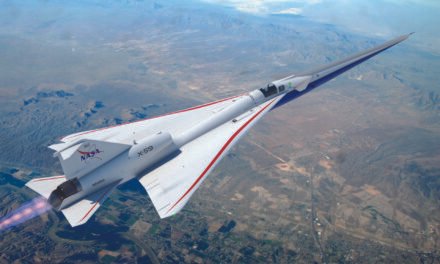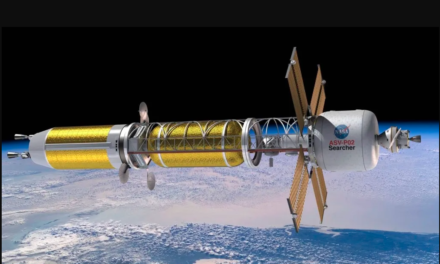Cybersecurity services play a critical role in protecting defense infrastructure from cyber threats, ensuring the integrity, confidentiality, and availability of sensitive systems and data. As defense operations increasingly rely on digital systems and interconnected networks, cybersecurity measures are essential for safeguarding military assets, operations, and critical infrastructure. Here’s how cybersecurity services protect defense infrastructure:
1. Threat Detection and Monitoring
A. Real-Time Threat Monitoring
- Role: Identify and track potential cyber threats across defense networks.
- How It Works:
- Security Information and Event Management (SIEM) tools collect and analyze logs from network devices, servers, and endpoints to detect anomalies.
- AI-driven solutions identify unusual patterns, such as unauthorized access or data exfiltration attempts.
- Example:
- The U.S. Department of Defense’s Endpoint Security Solutions (ESS) monitors endpoints for suspicious activities.
B. Threat Intelligence Integration
- Role: Leverage global threat intelligence to preempt cyberattacks.
- How It Works:
- Cybersecurity services integrate feeds from international threat databases to identify emerging tactics, techniques, and procedures (TTPs).
- Real-time updates help prioritize vulnerabilities and mitigate risks.
- Example:
- NATO’s Malware Information Sharing Platform (MISP) facilitates shared cyber threat intelligence among allies.
2. Network Security
A. Firewalls and Intrusion Prevention Systems (IPS)
- Role: Prevent unauthorized access to defense networks.
- How It Works:
- Firewalls filter incoming and outgoing traffic based on predefined rules.
- IPS detects and blocks malicious traffic in real time.
- Example:
- Deployed on military bases to protect classified communication systems.
B. Virtual Private Networks (VPNs)
- Role: Secure data transmission across untrusted networks.
- How It Works:
- Encrypts communication between remote users and defense networks.
- Example:
- VPNs are used for secure communication between deployed units and command centers.
3. Endpoint Protection
A. Antivirus and Anti-Malware Solutions
- Role: Protect devices against malicious software.
- How It Works:
- Regular scans and real-time monitoring detect and remove malware.
- Example:
- Defense-grade endpoint protection solutions like McAfee ENS protect sensitive military devices.
B. Endpoint Detection and Response (EDR)
- Role: Provide advanced detection and response for endpoint threats.
- How It Works:
- EDR tools continuously monitor endpoints for suspicious activities and enable rapid containment.
- Example:
- CrowdStrike Falcon is used for endpoint monitoring and incident response in defense environments.
4. Data Security
A. Encryption
- Role: Safeguard sensitive defense data from unauthorized access.
- How It Works:
- Encrypts data at rest, in transit, and during processing using advanced algorithms.
- Example:
- Secure communication between military satellites and ground stations is protected by end-to-end encryption.
B. Data Loss Prevention (DLP)
- Role: Prevent unauthorized data transfer or leaks.
- How It Works:
- Monitors and controls data movement across networks, endpoints, and storage.
- Example:
- DLP systems prevent classified information from being emailed or uploaded to unauthorized platforms.
5. Identity and Access Management (IAM)
A. Role-Based Access Control (RBAC)
- Role: Limit access to sensitive systems and data based on roles.
- How It Works:
- Ensures personnel can only access resources necessary for their roles.
- Example:
- Restricts access to missile guidance systems to authorized personnel only.
B. Multi-Factor Authentication (MFA)
- Role: Strengthen user authentication to prevent unauthorized access.
- How It Works:
- Requires multiple forms of verification, such as passwords and biometrics.
- Example:
- MFA is mandatory for accessing critical defense systems like command and control (C2) networks.
6. Cyber Incident Response
A. Incident Detection and Analysis
- Role: Identify and analyze the scope of cyber incidents.
- How It Works:
- Forensic tools analyze logs, network traffic, and system behavior to determine the source and impact of an attack.
- Example:
- Cybersecurity Operation Centers (CSOCs) analyze real-time data during cyberattacks.
B. Containment and Recovery
- Role: Mitigate damage and restore systems after a cyberattack.
- How It Works:
- Isolates affected systems to prevent further spread and initiates recovery plans.
- Example:
- Recovery protocols include re-imaging infected systems and restoring data from backups.
C. Post-Incident Analysis
- Role: Learn from incidents to prevent recurrence.
- How It Works:
- Conducts detailed reviews to identify gaps in defenses and improve future responses.
- Example:
- Cyberattack exercises simulate responses to ransomware targeting command networks.
7. Cyber Resilience
A. Redundancy and Backups
- Role: Ensure continuity of operations during cyberattacks.
- How It Works:
- Critical systems have redundant backups, and data is regularly replicated in secure locations.
- Example:
- Defense systems have failover mechanisms to maintain operational capabilities during cyber disruptions.
B. Hardening Systems
- Role: Strengthen system security against cyber threats.
- How It Works:
- Updates, patches, and configuration reviews eliminate vulnerabilities.
- Example:
- Routine patching of military operating systems to address zero-day vulnerabilities.
Future Trends in Defense Cybersecurity
A. Artificial Intelligence (AI)
- AI systems enhance threat detection by identifying patterns and anomalies faster than human operators.
B. Quantum Encryption
- Defense organizations are exploring quantum cryptography for unbreakable communication security.
C. Zero Trust Architecture
- Adopts a “never trust, always verify” model, ensuring strict access controls for every interaction.













